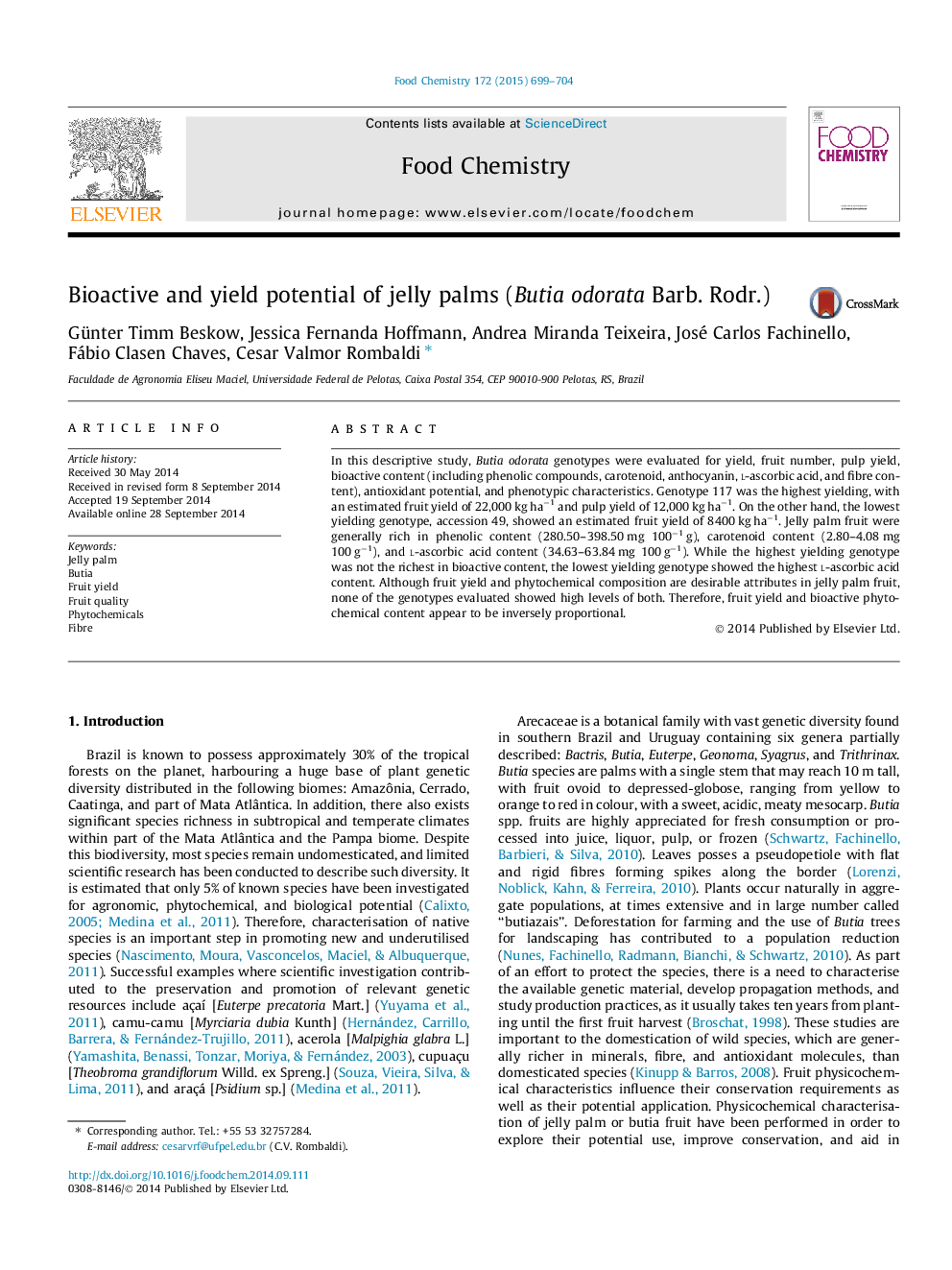| Article ID | Journal | Published Year | Pages | File Type |
|---|---|---|---|---|
| 7594503 | Food Chemistry | 2015 | 6 Pages |
Abstract
In this descriptive study, Butia odorata genotypes were evaluated for yield, fruit number, pulp yield, bioactive content (including phenolic compounds, carotenoid, anthocyanin, l-ascorbic acid, and fibre content), antioxidant potential, and phenotypic characteristics. Genotype 117 was the highest yielding, with an estimated fruit yield of 22,000 kg haâ1 and pulp yield of 12,000 kg haâ1. On the other hand, the lowest yielding genotype, accession 49, showed an estimated fruit yield of 8400 kg haâ1. Jelly palm fruit were generally rich in phenolic content (280.50-398.50 mg 100â1 g), carotenoid content (2.80-4.08 mg 100 gâ1), and l-ascorbic acid content (34.63-63.84 mg 100 gâ1). While the highest yielding genotype was not the richest in bioactive content, the lowest yielding genotype showed the highest l-ascorbic acid content. Although fruit yield and phytochemical composition are desirable attributes in jelly palm fruit, none of the genotypes evaluated showed high levels of both. Therefore, fruit yield and bioactive phytochemical content appear to be inversely proportional.
Related Topics
Physical Sciences and Engineering
Chemistry
Analytical Chemistry
Authors
Günter Timm Beskow, Jessica Fernanda Hoffmann, Andrea Miranda Teixeira, José Carlos Fachinello, Fábio Clasen Chaves, Cesar Valmor Rombaldi,
